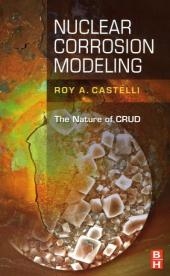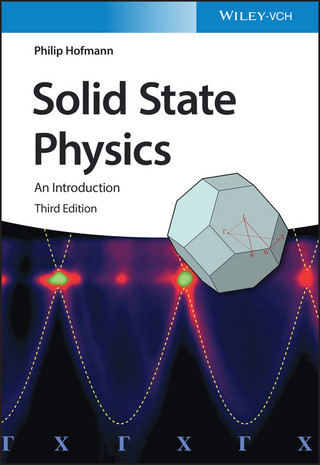
Nuclear Corrosion Modeling
Butterworth-Heinemann Ltd (Verlag)
978-1-85617-802-0 (ISBN)
Corrosion in nuclear power plants cause reductions in efficiency and increases in deposit build-up on plant surfaces, making for expensive maintentance and potential radiological health hazards. This book guides studies to predict and minimize corrosion, thus making nuclear power safer and more cost effective. Too often, reliance on empirical models and on-site testing of existing plants makes study and prediction of corrosive effects in nuclear reactors into a pricey and lengthy process. Introducing the experimental procedures, set up, sample preparation and computer modeling suggested in this book will save precious time and resources in a field where the significant time and expense to get and keep plants on-line are two of the chief concerns preventing broader commerical viability.
PrefaceIntroductionWhy do we care? Bounding the discussion The reactorMaterials of constructionpH control agents and coolant additivesClarifying the definitionThe analytical domainThe Corrosion SourceThe processThe formWhy a double layered film?Ion site preferenceKinetics Modeling the behaviorA closer look at kpElemental speciation of kp & krThe cobalt sourceTramp cobalt in construction material High cobalt content alloys A place to startFraming the vision of the general equation setMass balancesPhysico-chemical processesNuclear processesDependant variablesModeling coolant additives and pH control agentsBuilding block fluxes for the general equation setCorrosion growth and release Particulate deposition and erosion Water PurityPractical measurements of kdp and ke Hydro-thermal crystallization/dissolutionSaturated or equilibrium coolant concentrations Vanishing dependent variablesParsing the hydrothermal mass transferModeling of boiling phenomenaBoiling enhanced hydrothermal crystallizationBoiling enhanced particulate depositionHydrothermal particulate crystallization/dissolutionSaturation enhancement factor (FP) Hydrothermal particulate mass transfer coefficient Building block models for radioactive build-up and decayEffective thermal neutron production cross sections Chromite sub-layer equationsIron & nickel based alloysStellite??ZircaloyFerrite layer equationsParticulate aqueous phase equationsDiscussionAqueous soluble phase equations Iron & nickel based alloy soluble equationsZircaloy base metal soluble equations Stellite?? base metal soluble equationsDiscussionFraming the vision of the media equation set Reactor coolant purification systemsModeling mediaFiltration building block model Modeling ?? f and ??A simpler approach Ion-exchange building block modelThe media equation setMedia ionic sub-surface equations (ion-exchangers only) Media surface phase (filtered mass) equationsMedia particulate equationsMedia soluble equationsA solution methodLinerizing the equation sets Finite differencingGeneral equations for iron in iron/nickel based alloysSimplified-linearized iron equationsDiscussion How does finite-differencing work? Defining Y (n) and b (n,m)Subordinate or Secondary Models and Correlations FORTRAN or C Algorithms for the Thermodynamic Properties of Steam and WaterComputation of pH (log of the H+ ion concentration)Single Phase Hydraulic Friction Factor Defining the Input Architecture for NOCSystem Defaults and Program Control InputsFinite Difference MeshTime Independent Part (or region) InputsOperating History Histogram InputsThe Modeling of TimeTime Dependent InputsTime dependent loop connection table inputs Time dependent part inputsNuclear inputs and power shapesProgram design and suggestionsProgram ArchitectureInput module Full input processingInput pre-scanningFull input summary editsAuto-mesh generationInitial dependent variable boundary conditionsRestart input processingThe restart file structureThe analysis module Loop 1 ? Operating Steps Keeping track of timeLoop 2 ? Temporal Power Rows Loop 3 ? Descending the loop connection tableLoop 4 ? The inner-most loop over mesh cellsDynamic solution repairConsider a freezing strategyRow convergenceA word about convergence Preserving the mass balance Partial row rebalanceOscillatory solutions A special case mass rebalanceWrapping up the problemSummary tablesThe output module SummaryPre and post processing (the GUI interface) Post processing functionalitySpecial solution editsSimulation graphical trendsSummaryAfterward References.Glossary NomenclatureAppendix A.Nickel equilibriaCobalt equilibriaZinc equilibria
| Verlagsort | Oxford |
|---|---|
| Sprache | englisch |
| Maße | 152 x 229 mm |
| Gewicht | 510 g |
| Themenwelt | Naturwissenschaften ► Physik / Astronomie ► Atom- / Kern- / Molekularphysik |
| Technik ► Elektrotechnik / Energietechnik | |
| ISBN-10 | 1-85617-802-1 / 1856178021 |
| ISBN-13 | 978-1-85617-802-0 / 9781856178020 |
| Zustand | Neuware |
| Haben Sie eine Frage zum Produkt? |
aus dem Bereich


